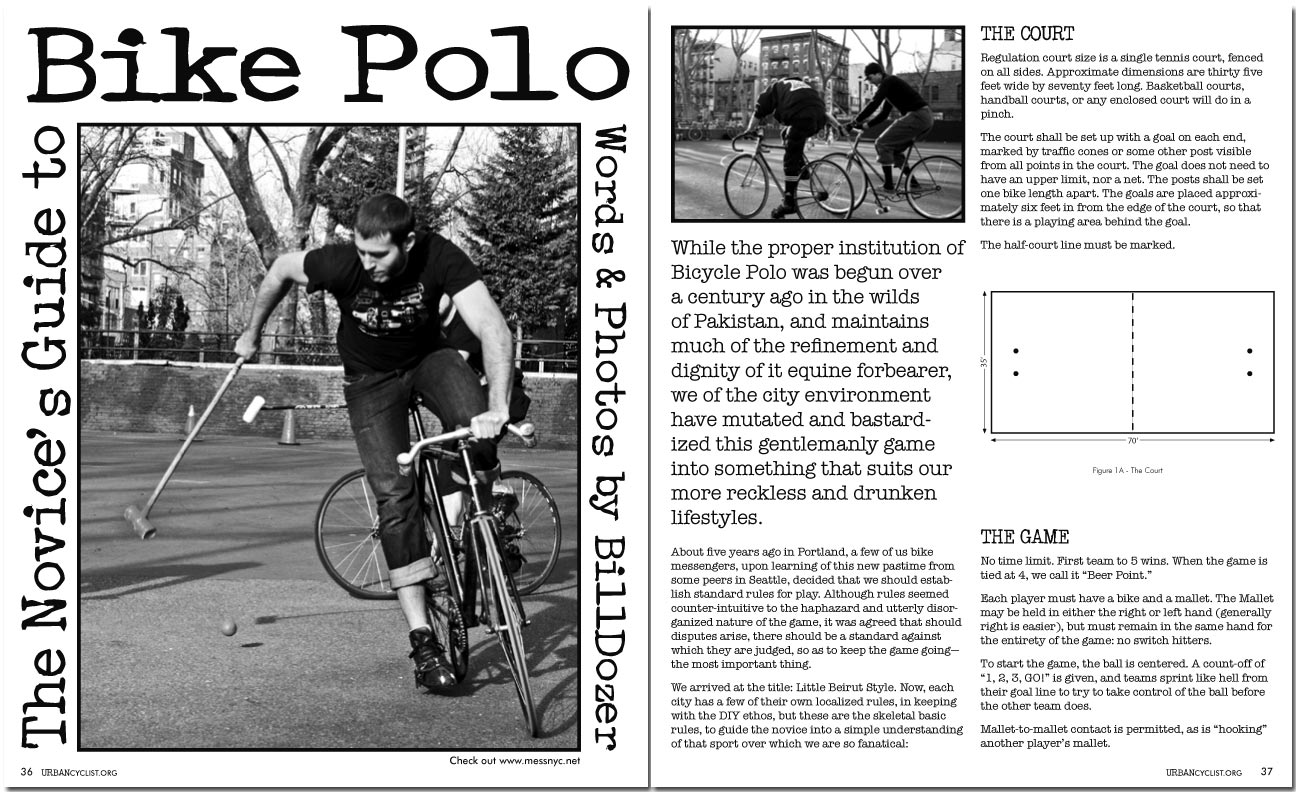The Novice's Guide to Bike Polo
By BillDozer - www.messnyc.net
While the proper institution of Bicycle Polo was begun over a century ago in the wilds of Pakistan, and maintains much of the refinement and dignity of it equine forbearer, we of the city environment have mutated and bastardized this gentlemanly game into something that suits our more reckless and drunken lifestyles.
About five years ago in Portland, a few of us bike messengers, upon learning of this new pastime from some peers in Seattle, decided that we should establish standard rules for play. Although rules seemed counter-intuitive to the haphazard and utterly disorganized nature of the game, it was agreed that should disputes arise, there should be a standard against which they are judged, so as to keep the game going—the most important thing.
We arrived at the title: Little Beirut Style. Now, each city has a few of their own localized rules, in keeping with the DIY ethos, but these are the skeletal basic rules, to guide the novice into a simple understanding of that sport over which we are so fanatical:
THE COURT
Regulation court size is a single tennis court, fenced on all sides. Approximate dimensions are thirty five feet wide by seventy feet long. Basketball courts, handball courts, or any enclosed court will do in a pinch.
The court shall be set up with a goal on each end, marked by traffic cones or some other post visible from all points in the court. The goal does not need to have an upper limit, nor a net. The posts shall be set one bike length apart. The goals are placed approximately six feet in from the edge of the court, so that there is a playing area behind the goal.
The half-court line must be marked.
THE GAME
No time limit. First team to 5 wins. When the game is tied at 4, we call it “Beer Point.”
Each player must have a bike and a mallet. The Mallet may be held in either the right or left hand (generally right is easier), but must remain in the same hand for the entirety of the game: no switch hitters.
To start the game, the ball is centered. A count-off of “1, 2, 3, GO!” is given, and teams sprint like hell from their goal line to try to take control of the ball before the other team does.
Mallet-to-mallet contact is permitted, as is “hooking” another player’s mallet.
Continued |

